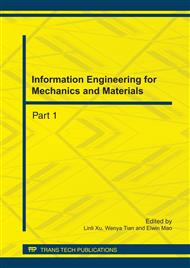p.409
p.414
p.421
p.426
p.431
p.436
p.440
p.444
p.448
Microstructures and Properties of Ti-Nb Alloys Produced by Powder Metallurgy
Abstract:
Ti-Nb alloys were prepared by powder metallurgy. Their microstructures are detected by the XRD diffraction and are observed using an optical microscope. The mechanical properties are tested using a dynamic mechanical analysis (DMA) Q800 from TA Instruments in single cantilever mode and using a 100 KN MTS testing machine with control software. It has been found that the sintered Ti-Nb alloys possess the stable α and β phases and the amount in β phase increases with increasing Nb content. The water quenched Ti-35.4Nb alloy contains α,, and βM. The as-sintered alloy has higher yield stress and storage modulus than the water quenched Ti-35.4Nb alloy, which is resulted from the α phase with high modulus in the as-sintered alloy. The ω phase can be precipitated from βM when the water quenched Ti-35.4Nb alloy is aged at 300 °C, causing the modulus to increase since ω phase has large modulus.
Info:
Periodical:
Pages:
431-435
Citation:
Online since:
July 2011
Authors:
Keywords:
Price:
Сopyright:
© 2011 Trans Tech Publications Ltd. All Rights Reserved
Share:
Citation:


